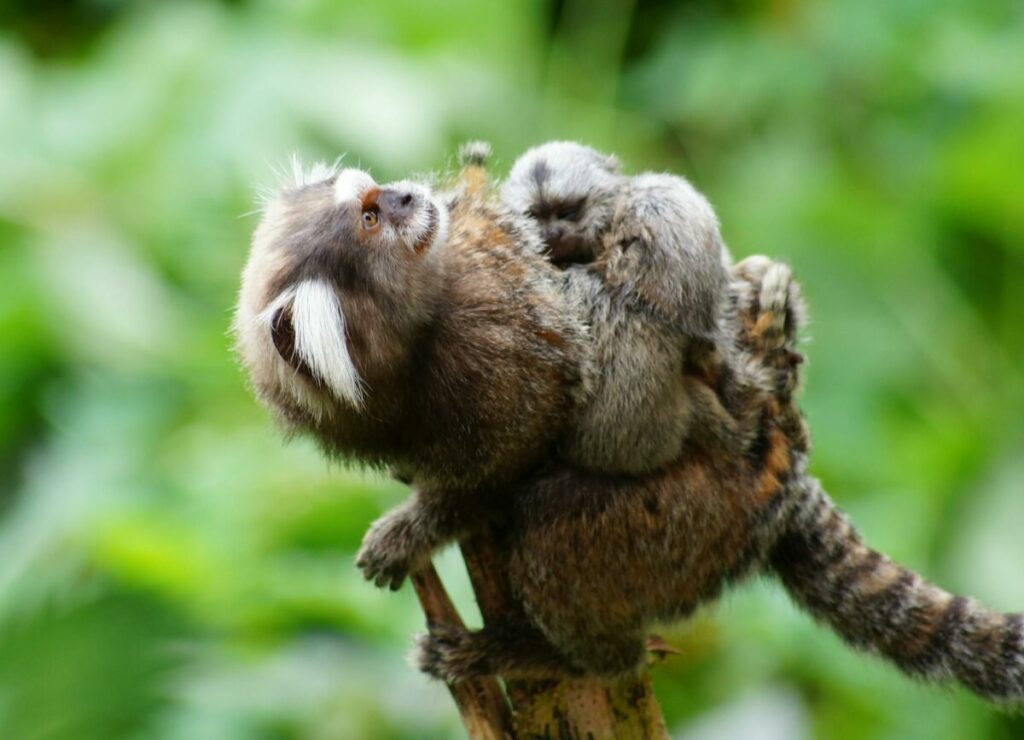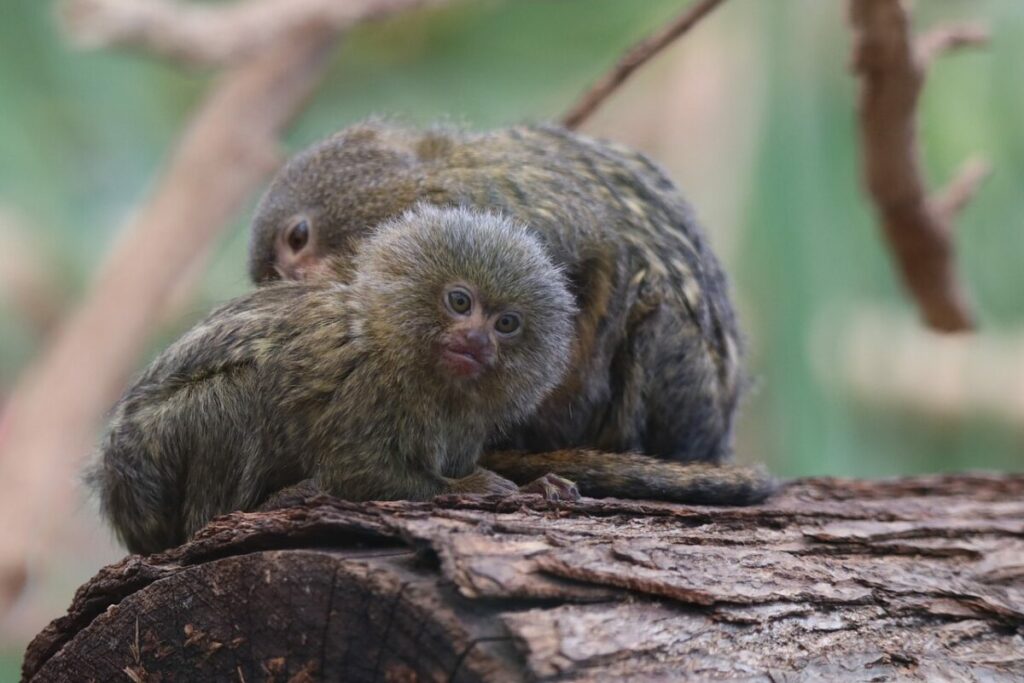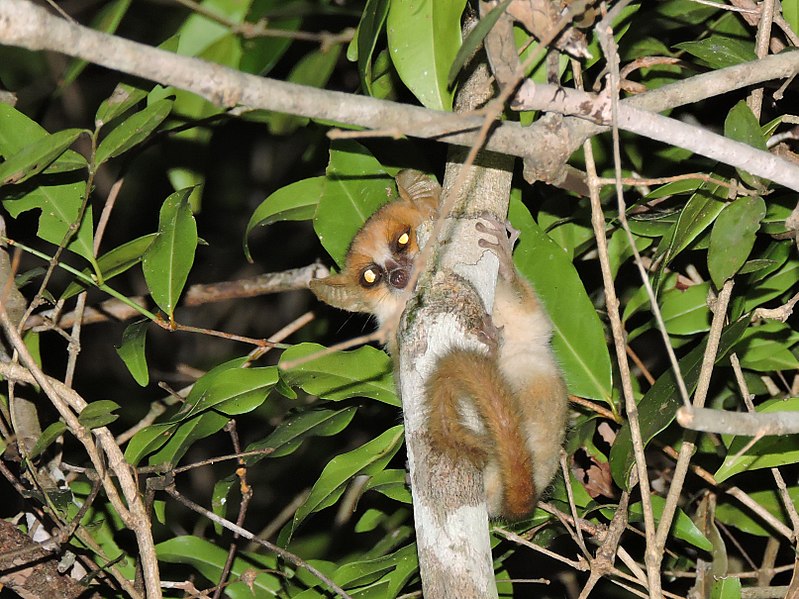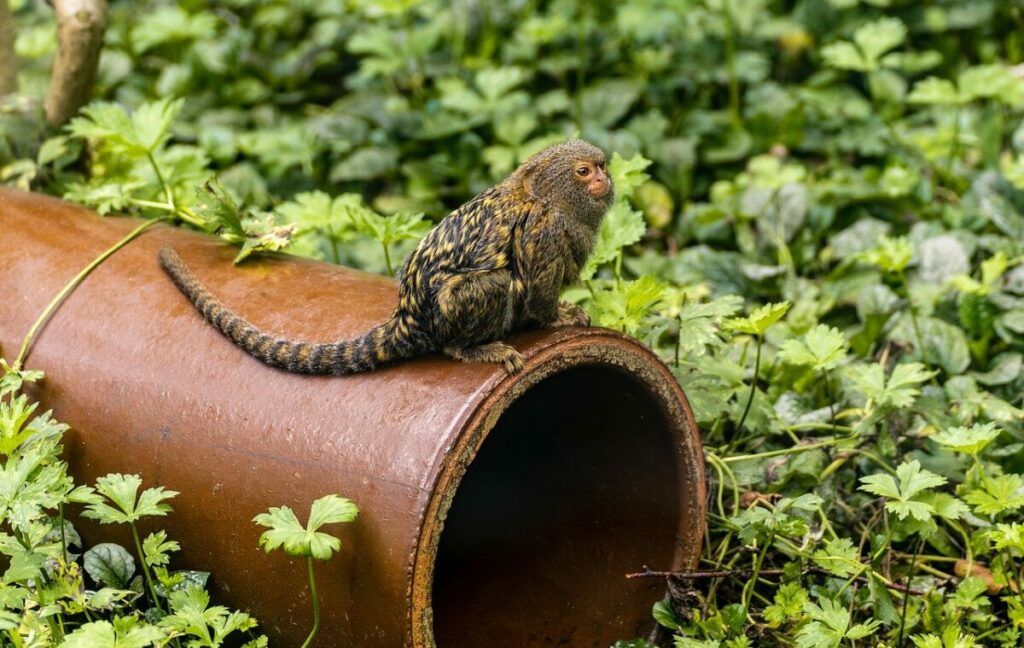Finger monkeys, or pygmy marmosets as they’re also known, can grow up to a length of 4.6 to 6.2 inches excluding their tail. This petite size makes them one of the smallest primates in the world, demonstrating their fragile yet charming nature. In terms of growth stages, these little creatures go from being almost unnoticeable at birth to reaching significant stages like opening their eyes, moving around, and starting to eat solid food. These insights about finger monkeys not only help pet owners in looking after these animals but also those studying them in the wild. Now let’s take a walk through these stages of their remarkable growth.
Finger monkeys, or pygmy marmosets, are one of the smallest primates in the world, growing to be between 4.6 and 6.2 inches long (not including their tail). These tiny creatures are native to South American rainforests and typically weigh only around 3 to 5 ounces when fully grown.

Finger Monkey Growth Stages

Think of a finger monkey as a tiny, delicate treasure. At birth, they are incredibly small and reliant on their parents for every single thing. These little ones start at just 5-6 inches in length and weigh only a few ounces. The first few weeks of their life are crucial as they depend entirely on their mothers for safety, warmth, and nourishment.
A few weeks into their lives, you’ll notice the incredible milestone of their eyes opening. This is an exciting time as they start to take in the world around them and become more aware of their surroundings. They slowly begin to gain mobility, using their incredibly dexterous tails and nimble fingers to cling onto their mothers or venture out in search of new sights and experiences.
The next significant stage focuses on weaning off their mother’s milk. This is a crucial phase as they start eating solid food for the first time. As they transition from solely depending on their mother’s milk to tasting fruits, vegetables, insects, sap, and gum, their diet gradually expands to incorporate a variety of nutrients necessary for their growth.
During this time, you’ll observe that they also begin to interact more with the other members of their social group. Just like human infants learning from their environment, young finger monkeys pick up social cues and behaviors from watching and interacting with the adults around them.
As they continue growing, they reach another important milestone when they are about 6 months old. At this age, they have developed enough to measure around 7-8 inches in length and weigh approximately 6-8 ounces. Around this time, they become more independent but still require care and guidance from their parents and older members of the group.
Understanding these growth stages helps caretakers provide appropriate care for finger monkeys as pets or researchers studying them in their natural habitat. By being observant and nurturing during these developmental stages, individuals can ensure that young finger monkeys thrive as they navigate the intricate process of growth and development.
Mastering each developmental phase is key to ensuring the well-being of these unique creatures. Now, let’s shed light on the ultimate inquiry about these captivating animals: How Big Does a Finger Monkey Get?
How Big Does a Finger Monkey Get?
The size of a finger monkey is truly something to behold. These tiny primates typically grow to be between 4.6 and 6.2 inches long, not including their tail. Sounds small, right? That’s because it is! In fact, this makes them one of the smallest primate species in the world, showcasing just how extraordinary they are.
To put this into perspective, think about an average-sized smartphone. Most modern smartphones measure around 5.9 inches in length, which means that an adult finger monkey could very well fit within the span of your palm—or even next to your phone comfortably. It’s hard not to be astonished by just how compact and charming these creatures can be.
Comparing Finger Monkey Sizes

Another interesting way to visualize the size of a finger monkey is by comparing it to common objects that we interact with daily. For instance:
- An average-sized banana measures around 7 to 8 inches in length—significantly larger than a finger monkey.
- A standard-sized pencil measures approximately 7.5 inches long—again, dwarfing the tiny frame of these remarkable animals.
Just imagine being able to cradle such a petite primate in the palm of your hand—it truly gives you a whole new appreciation for the delicate nature of these endearing creatures.
Understanding the dimensions of a finger monkey provides insight into how intricate it is to care for these captivating animals. Their small size necessitates specialized attention and accommodation in captivity, reinforcing how remarkable it is to witness them thrive in their natural habitats. It also brings attention to preserving their natural homes and environments.
By presenting detailed measurements and comparisons, we can gain a clearer understanding of just how extraordinary finger monkeys are in their delicate and diminutive nature, captivating animal enthusiasts worldwide with their charming presence.
In observing the fascinating size aspect of finger monkeys, a natural curiosity emerges about their weight and how it changes as they grow older. Let’s turn our focus to exploring the weight variations of these captivating creatures at different stages of their early development.
Finger Monkey Weight at Different Ages
At birth, finger monkeys are incredibly tiny, weighing only about 0.5 to 0.7 ounces, just a touch heavier than a few coins in your pocket. But don’t let their small size fool you; these little creatures grow rapidly in their early weeks of life.
Birth to 6 Months

In just a few weeks, finger monkeys often double or even triple their birth weight. By the time they reach 6 months old, they typically weigh around 6 to 8 ounces, firmly establishing them as one of the tiniest primates in the world.
6 Months to 1 Year

As they continue to grow into their first year, they put on even more weight and by the time they hit the one-year mark, their weight has usually increased to about 8 to 10 ounces. This steady progression in weight is essential for their overall health and development and is an important indicator of their well-being.
It’s important to ensure that finger monkeys receive proper nutrition and care during these critical growth stages as it directly impacts their growth and development.
Adult Weight

Fully grown adult finger monkeys typically weigh between 3 to 5 pounds. Such rapid growth within a relatively short lifespan is nothing short of remarkable when considering how tiny these primates are at birth.
Sharing data on their weight progression can provide insight into their development and care needs.
Understanding the weight progression of finger monkeys is not only fascinating but also crucial for ensuring they receive the proper care throughout their growth journey.
Impact of Diet on Finger Monkey Size

Like with humans, the food finger monkeys eat has a significant impact on their growth. In the wild, finger monkeys consume a variety of items—sap, resin, gum from trees, small insects, butterflies, spiders, and fruit. This diverse diet contributes to their slow but steady growth, helping them to develop naturally over time.
Their wild diet reflects a balance between protein-rich sources like insects and other small creatures, alongside a mix of fruits, gum, and sap. This provides them with the necessary nutrients for their bodies to develop gradually. Protein is essential for muscle development and overall growth, while vitamins from fruits and other natural sources contribute to bone health and overall growth.
Let’s think of it like this: When you have a meal that’s good for you—maybe some chicken or fish with a side of vegetables—you’re getting the protein you need for strong muscles along with vitamins that help your body grow in a healthy way. It’s kind of the same for finger monkeys!
Now, if we switch gears to finger monkeys as pets, it’s crucial for potential owners to understand this relationship between diet and growth. Providing a balanced diet is key to ensuring healthy growth and development.
Recommended Diet Plan for Pet Finger Monkeys

Type of Food | Contribution |
|---|---|
Fruits | For overall energy and nutrition |
Vegetables | For fiber and essential vitamins |
Insects | For protein and essential fats |
The ideal ratio of their diet would be around 60% fruits, 30% vegetables, and 10% insects. This combination ensures they get all the nutrients they need for healthy growth and development.
Take a look at breakfast cereal! You have your grains (like oats or corn), some nuts or dried fruit for protein, and usually some kind of sweetener for energy. The idea is the same—the combination gives you energy to start your day with enough nutrients to keep you healthy.
So when caring for pet primate companions inside your home environment, it’s important to mimic their natural dietary patterns as closely as possible in order to ensure optimal health.
Understanding the influence of diet on finger monkey size is crucial when aiming for their well-being in captivity. By offering a balanced diet that mirrors their natural eating habits in the wild, pet owners can ensure that their finger monkey companions grow in a natural and healthy manner.
In considering the impact of diet on finger monkey size and well-being, it’s equally important to analyze how these petite primates compare with others in the wild. Let’s explore these comparisons to gain deeper insights into these fascinating beings.
Comparison with Other Petite Primates
When it comes to small primates, some other species rival the finger monkey in terms of tiny dimensions. Let’s start by comparing the size characteristics of finger monkeys with two other petite primates: the pygmy tarsier and Madame Berthe’s mouse lemur.
Pygmy Tarsier

The pygmy tarsier is another one of the world’s smallest primates, falling within a similar size range as the finger monkey. With adults growing to be around 3.5 to 6 inches in length and weighing between 2.8 to 5.8 ounces, they are also incredibly small.
Madame Berthe’s Mouse Lemur

Madame Berthe’s mouse lemur is known for being one of the world’s smallest living primates, with an adult size ranging from 3.6 to 4.7 inches and a weight of only 1 to 1.5 ounces. This places this species into the category of remarkably small primates.
Putting all these sizes together helps us put into perspective just how small these creatures truly are. It’s like having a tiny ball of fluff sitting in your palm! Such comparisons underscore the exceptional nature of finger monkeys; they hold a unique status as one of the smallest primates, claiming their place in the diverse tapestry of primate life while maintaining their extraordinary cuteness and charm.
These comparisons offer intriguing insights into the primate world, showcasing diverse creatures that all play unique roles in their respective ecosystems. By understanding how finger monkeys measure up against their petite primate counterparts, we can appreciate their distinct place in the natural world and recognize their exceptional stature as one of the tiniest and most captivating creatures on our planet.
This kind of information deepens our appreciation for the remarkable diversity found in nature and underscores just how distinct and special these tiny creatures are in comparison to their primate relatives.
Understanding the context of finger monkeys’ size in comparison to other small primates sets the stage for exploring the influence of habitat on these tiny creatures’ physical dimensions.
Effect of Habitat on Finger Monkey Size

The size of a finger monkey can be influenced by its natural habitat, including factors such as temperature, humidity, and food availability. It’s intriguing how environmental elements can impact the growth and development of these tiny creatures. Picture walking through the South American rainforests where these small primates reside.
In regions with abundant food sources and favorable climatic conditions, finger monkeys tend to grow larger compared to those in less hospitable environments. The availability of food, suitable temperature, and humidity levels play a significant role in their development. Abundant resources provide them with more energy to thrive and grow, whereas scarcity may result in stunted growth.
Moreover, living in the treetops demands agility in climbing and leaping. Therefore, they need to be light and slender to efficiently move through the trees. Their small size is an adaptation that facilitates navigation through their environment with ease.
Scientific research has shown that the impact of habitat on finger monkey size can be observed by comparing data from different geographical locations. By analyzing physical characteristics of finger monkeys from various habitats, researchers uncover trends in their growth patterns, shedding light on how surroundings influence their development.
For instance, finger monkeys in areas with abundant food might exhibit larger body sizes, longer limbs, or denser fur compared to those living in regions with fewer resources. These physical adaptations enable survival and thriving in specific environments.
Understanding how their natural habitat affects their size provides valuable insights for conservation efforts and captive breeding programs aimed at preserving this unique primate species. It also underscores the importance of protecting their habitats to ensure the continued survival of these captivating creatures.
Delving deeper into the relationship between finger monkey size and their natural habitat, let’s explore ethnographic data on the habitats of finger monkeys to gain qualitative insights into their growth patterns.
Acknowledging the impact of habitat on finger monkey size enhances our appreciation for the delicate balance between these remarkable animals and their environment. It illuminates the critical role of conservation efforts in safeguarding these captivating creatures for generations to come.